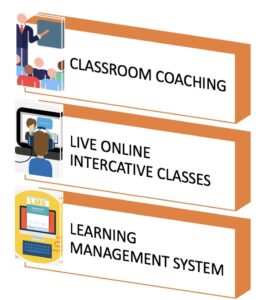




















The first round of the NIFT 2025 exam took place on February 9, 2025, and the results will soon be announced. It is anticipated that the NIFT will release the results by the end of the third week of March 2025.The shortlisted candidate will move forward with the second round of exam which Situation Test .
The Situation Test is the final phase of the NIFT entrance examination and significantly impacts the final selection of candidates, contributing 20% to the total score. This phase of the exam is conducted offline at different NIFT centres.
During the Situation Test, students are required to create a 3D model and present a write-up that uniquely explains their model based on a given topic. The evaluation of the model will focus on various criteria, including:
Candidates are only allowed to bring a pair of scissors, Fevicol or Fevistick, and a pen.
Prepare a Well-Equipped Tool Kit
Before starting on any model-making task, it’s essential to organize all necessary tools and materials. A well-prepared toolkit improves efficiency and provides a smoother workflow.
Essential Tools & Utilities
✔ Measuring and Cutting Tools: Geometry box, metal and plastic rulers, paper knife, small and large scissors
✔ Adhesives and Fixatives: Glue stick, Fevicol, cello tape, all pins
✔ Marking and Detailing Tools: Markers, pencils, erasers, sketch pens
Having these essentials available allows for effective model building and reduces interruptions throughout the process. Understanding and Handling Materials.
Understanding and Handling Materials
Model making requires working with various types of materials. To ensure accuracy and stability, it’s important to practice handling, cutting, and assembling a range of materials both within and across categories. Therefore, it is advisable to practice with various relevant materials as much as possible. Review previous years’ question papers for the Situation Test and compile a list of materials used in the past five years to assemble your Situation Test Kit.
If you prefer not to source these materials, you can purchase a Situation Test Kit that includes the latest previous year question paper—call on…
https://pahaldesign.com/nift-situation-test-previous-18-years-question-papers/
Effective Time Management & Workflow Strategy
Effective time management is crucial during model making. Without proper planning, it is easy to lose track of time and become preoccupied with minor details.
⏳ Work within a time limit—strive to complete tasks within two hours to maintain productivity.
The total duration for the test is two hours, which consists of both model making and writing a description of the product. To optimize the time:
📌 Plan before execution—prior to starting, create a list of all necessary materials and their intended use in the model.
🗂 Organize materials—categorize materials by their uses for different components that will form the final model, and quickly outline your plan. This activity helps minimize confusion during the process and allows you to creatively utilize the maximum number of products.
By adopting a structured approach, students can prevent unnecessary delays and concentrate on achieving high-quality results.
Focus on Concept Development
When creating the model, always keep its purpose at the forefront. Consider what you are creating and the rationale behind it. This perspective will introduce meaningful features to the model, giving it distinctiveness. A robust concept amplifies the overall effectiveness of the presentation.
The Significance Of The Write-Up
Many students direct their attention solely toward the model and overlook the written explanation. Nonetheless, the write-up holds equal importance as it articulates the concept behind the creation. Evaluators will assess the model based on the description presented by the candidates.
Presentation And Final Touches
A skillfully crafted model lacks completeness without appropriate presentation. The final appearance markedly influences evaluation and reception.
TIPS FOR ACHIEVING A CLEAN AND PROFESSIONAL FINISH